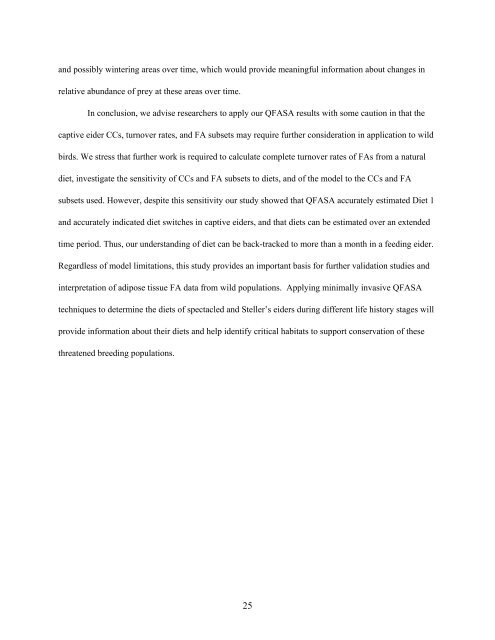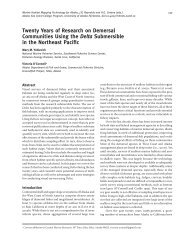724_Final Report.pdf - North Pacific Research Board
724_Final Report.pdf - North Pacific Research Board
724_Final Report.pdf - North Pacific Research Board
You also want an ePaper? Increase the reach of your titles
YUMPU automatically turns print PDFs into web optimized ePapers that Google loves.
and possibly wintering areas over time, which would provide meaningful information about changes in<br />
relative abundance of prey at these areas over time.<br />
In conclusion, we advise researchers to apply our QFASA results with some caution in that the<br />
captive eider CCs, turnover rates, and FA subsets may require further consideration in application to wild<br />
birds. We stress that further work is required to calculate complete turnover rates of FAs from a natural<br />
diet, investigate the sensitivity of CCs and FA subsets to diets, and of the model to the CCs and FA<br />
subsets used. However, despite this sensitivity our study showed that QFASA accurately estimated Diet 1<br />
and accurately indicated diet switches in captive eiders, and that diets can be estimated over an extended<br />
time period. Thus, our understanding of diet can be back-tracked to more than a month in a feeding eider.<br />
Regardless of model limitations, this study provides an important basis for further validation studies and<br />
interpretation of adipose tissue FA data from wild populations. Applying minimally invasive QFASA<br />
techniques to determine the diets of spectacled and Steller’s eiders during different life history stages will<br />
provide information about their diets and help identify critical habitats to support conservation of these<br />
threatened breeding populations.<br />
25



